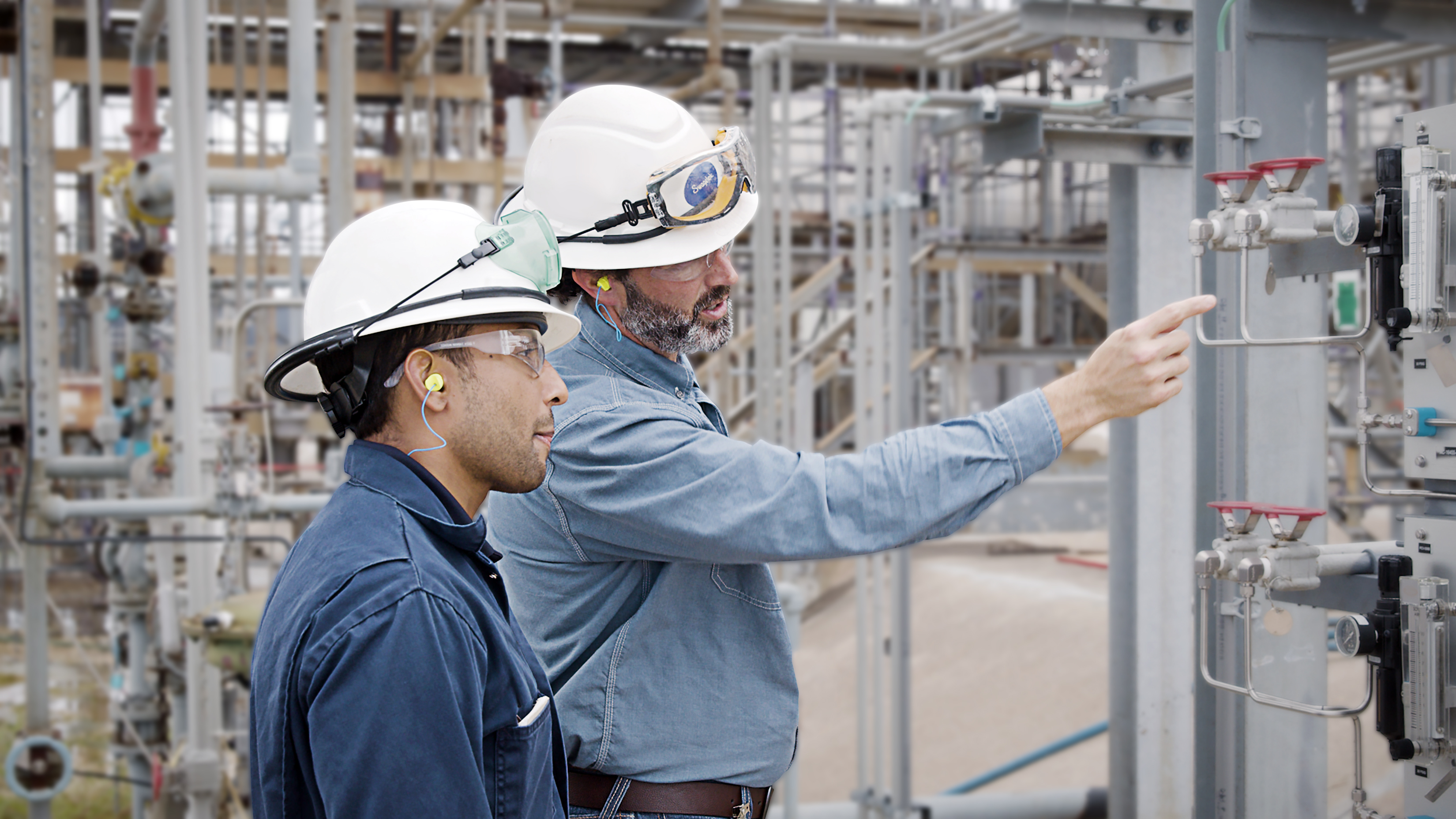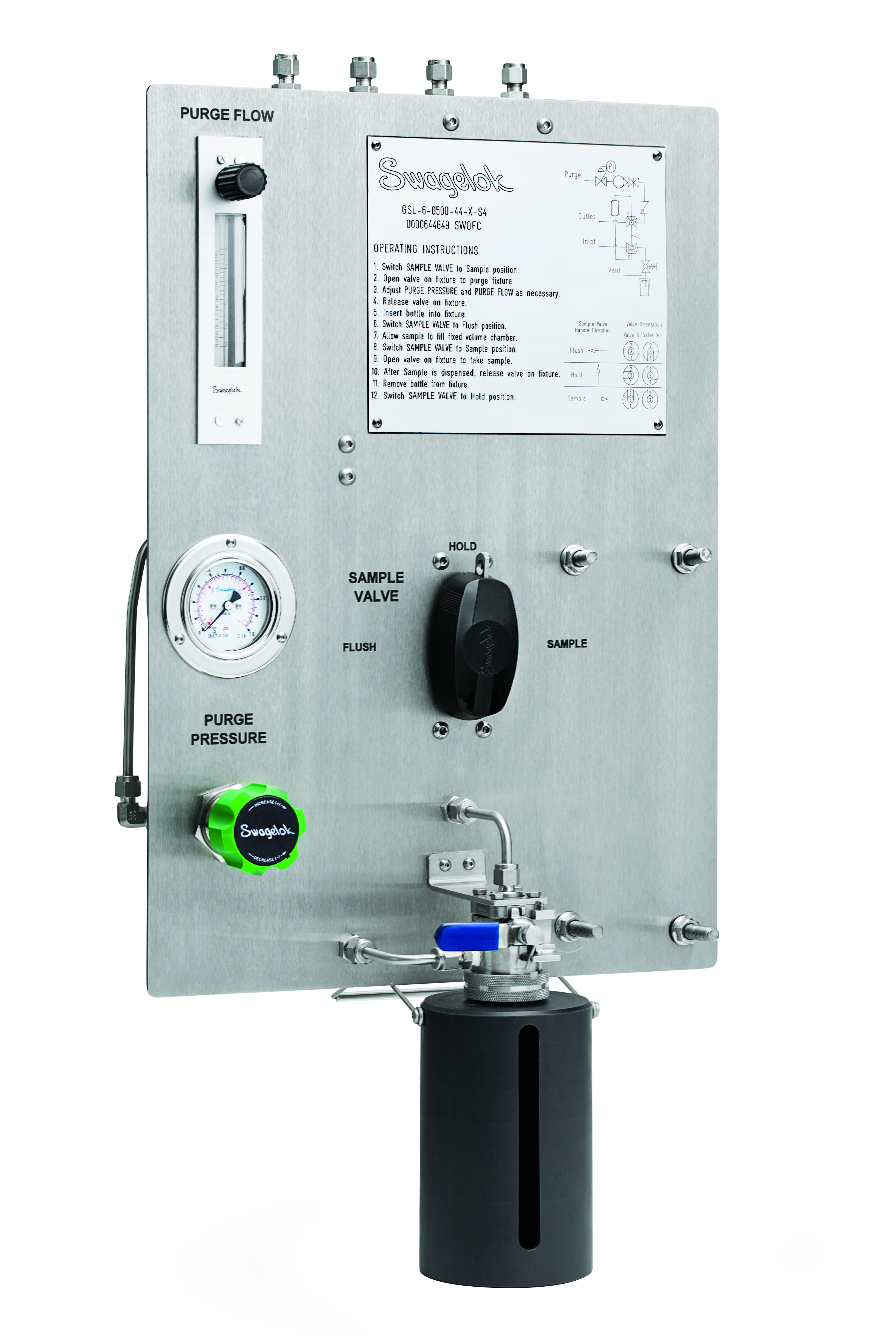Learn how Swagelok grab sampling systems can help operators improve facility efficiency and protect the environment.
 Hydrogen is uniquely positioned among alternative fuel sources and technology aiming to reduce greenhouse gas emissions and curb the effects of climate change. Hydrogen has many avenues of generation, whether that be steam methane reformation, electrolysis, or gasification of biofuels. Large-scale hydrogen production already exists via the SMR process; coupled with carbon capture and sequestration, net-zero hydrogen producing plants are set to begin operation shortly.
Hydrogen is uniquely positioned among alternative fuel sources and technology aiming to reduce greenhouse gas emissions and curb the effects of climate change. Hydrogen has many avenues of generation, whether that be steam methane reformation, electrolysis, or gasification of biofuels. Large-scale hydrogen production already exists via the SMR process; coupled with carbon capture and sequestration, net-zero hydrogen producing plants are set to begin operation shortly.
Of course, there is more to hydrogen production inputs and externalities than greenhouse gasses and fugitive emissions. As with most fuel sources, hydrogen plants require large amounts of water as a chemical reagent, steam producer, and coolant. This uptake of water also comes with the logistics of proper treatment and disposal of the wastewater stream. For hydrogen plants in Edmonton, water treatment deserves as much consideration as sourcing.
Hydrogen plants in Edmonton must continue to prioritize the management of their water streams to ensure the continued availability and access of water for municipal, environmental, and economic health.
To best understand the situation of water treatment for Edmonton hydrogen plants, it’s a good idea to start at the source: public water rights and availability. Two key pieces of legislation, the 1999 Water Act and Water for Life Strategy provide the overarching framework for water usage in Alberta. The Water for Life Strategy, which was renewed in 2008, establishes three central goals for water consumption in the province:
Agriculture dominates water use, and therefore hydrogen plants must operate in a highly efficient manner not only for their bottom line, but also to ward against competing technologies and industries that are also keen on access. Fortunately, Edmonton is well-situated alongside the banks of the North Saskatchewan River, which can provide the necessary volume of water for all the processes of a hydrogen plant’s operation.
Although hydrogen production comes in a multitude of flavours, the dominant technology is steam methane reforming. Steam methane reforming, more simply known as steam reforming (and even more simply, SMR) is a relatively straightforward chemical reaction at its core:
| Steam reform: CH4 + H2O -> CO + 3H2 |
| Water-gas shift: CO + H2O -> CO2 + H2 |
| Net: CH4 + 2H2O -> CO2 + 4H2 |
The steam reform half-reaction, as well as the overall reaction are endothermic, meaning that the forward reaction can be further favoured with the addition of heat energy according to Le Chȃtelier’s Principle. Reactor operating conditions, therefore, operate north of 800°C, which requires additional water for cooling purposes as well as steam generation. Notably, the core reaction of SMR is the most efficient among the currently viable hydrogen production methods, but both steam production and cooling require a greater input of water than the reaction itself. While water consumption for steam generation is only marginally higher than that of the SMR reaction, water used for cooling is several factors greater than either.
| Before entering system | Within the system | After leaving system |
| Removes impurities promoting in-stream component longevity | Improves reaction efficiency | Reduces presence of undesirable solubles, keeping them out of the water cycle |
| Can source wastewater or industrial use water instead of freshwater for greater sustainability | Reduces rate of contaminant build-up, increasing the time between system purges and potentially maintenance | Protects environment with redundancies: even if additional treatment is needed, wastewater has undergone some level of treatment before leaving the facility |
Water used in cooling has the advantage of reuse, so the greater rate of requirement is somewhat misleading. However, that is not to say reuse is infinite. Evaporative cooling implies the coolant will have some rate of depletion, and an entire system purge and replenishment may be necessary once the concentration of mineral, organics, or heavy metals reach significant levels. Incoming water also necessitates a biocide to inhibit the growth of organic matter that could otherwise inhibit the performance of system components and cause flow issues. Therefore at all stages of water usage, analysis of water samples is critical to system health and the ecological wellness of the region.
Grab sampling systems are a necessity throughout the system to ensure that incoming water is properly prepped for usage across multiple stages of the hydrogen plant. Ensuring the integrity of the water leads to increased efficiency via the removal of contaminants from the reaction stream, lengthens the lifetime of components, and further minimizes the chance of incidents requiring repair, replacement, or maintenance. Equally as important as the incoming water is the outgoing: wastewater must be analyzed and treated to guide its eventual passage back into the environment. With sampling stations at the beginning and end of the system processes as well as many in-between steps, the robustness of the overall grab sampling system is a priority to the operation of any hydrogen plant.
 Grab sampling is a diagnostic tool that can find use in any fluid-based industrial process. The ability to gather an accurate snapshot of system conditions and preserve them for inspection creates a feedback loop for the engineering team to calibrate system parameters. Through the specific lens of water treatment, grab sampling ensures the quality of the incoming water and outgoing wastewater. Analyzing the sourced water improves the longevity of in-line system equipment while inspecting wastewater helps remove the presence of undesirable contaminants before leaving the facility. Grab sampling systems can be divided into two sub-designs: grab sample modules (GSM) and grab sample liquid (GSL).
Grab sampling is a diagnostic tool that can find use in any fluid-based industrial process. The ability to gather an accurate snapshot of system conditions and preserve them for inspection creates a feedback loop for the engineering team to calibrate system parameters. Through the specific lens of water treatment, grab sampling ensures the quality of the incoming water and outgoing wastewater. Analyzing the sourced water improves the longevity of in-line system equipment while inspecting wastewater helps remove the presence of undesirable contaminants before leaving the facility. Grab sampling systems can be divided into two sub-designs: grab sample modules (GSM) and grab sample liquid (GSL).
The greatest determinations between the two designs are therefore the physical state of the media, its volatility, and whether pressure concerns are a factor. Homogenous aqueous mixtures are not at risk of evaporating or fractionating; a GSL grab sampling system may be appropriate in these circumstances.
The age-old adage “It’s not the tool, but how you use it” applies just as well to grab sampling systems as any other device. While a necessary component in terms of feedback and providing the purest diagnosis of system operations, it is only with the proper course of action that adjustments to the system can be made. Moreover, troubleshooting the exact cause of system irregularities in an expansive and intricate fluid system found in a hydrogen plant is a formidable undertaking. Field Advisors are well-equipped to make sense of your grab sample results and verify that your system is set up to capture and maintain the integrity of representative samples from start to finish.
In addition to grab sampling systems, a Field Advisor can offer assistance to the operations of your fluid system in numerous ways. As a team of well-trained local experts backed by a globally recognized name in fluid systems, Field Advisors possess technical knowledge and are well-versed in the regulations and agencies governing Edmonton.
The health of our region belongs to the government and businesses working together to provide stewardship for the environment and a precious natural resource. For hydrogen plants in Edmonton, water treatment is both a matter of operational efficiency as well as an obligation to remain in compliance regarding the handling of the wastewater stream. Edmonton Valve & Fitting Field Advisors are committed to providing your fluid system operation with both the tools and the understanding to provide exceptional aid to your facility. Whether you need a system component replacement or an expert system inspection, we can handle your fluid system concerns.

Lorem ipsum dolor sit amet, consectetur adipiscing elit. Suspendisse tempor nisi ut vehicula commodo.
Learn More →
Lorem ipsum dolor sit amet, consectetur adipiscing elit. Suspendisse tempor nisi ut vehicula commodo.
Learn More →
Lorem ipsum dolor sit amet, consectetur adipiscing elit. Suspendisse tempor nisi ut vehicula commodo.
Learn More →
Lorem ipsum dolor sit amet, consectetur adipiscing elit. Suspendisse tempor nisi ut vehicula commodo.
Learn More →
Lorem ipsum dolor sit amet, consectetur adipiscing elit. Suspendisse tempor nisi ut vehicula commodo.
Learn More →
Lorem ipsum dolor sit amet, consectetur adipiscing elit. Suspendisse tempor nisi ut vehicula commodo.
Learn More →
Lorem ipsum dolor sit amet, consectetur adipiscing elit. Suspendisse tempor nisi ut vehicula commodo.
Learn More →
Lorem ipsum dolor sit amet, consectetur adipiscing elit. Suspendisse tempor nisi ut vehicula commodo.
Learn More →
Lorem ipsum dolor sit amet, consectetur adipiscing elit. Suspendisse tempor nisi ut vehicula commodo.
Learn More →Swagelok is a $2B developer of industrial fluid system products and services. Swagelok Edmonton is an authorized Swagelok Sales and Service Centre serving Canadian companies in clean energy, chemical, oil and gas, and other industries. Proud member of the Canadian Council for Aboriginal Business.
Tel: 780-437-0640.
Swagelok Edmonton values your privacy. This website uses cookies to enhance user experience and analyze performance and traffic. Our policies are posted here.
Login/Register | Privacy | Safe Selection | Centre Locator | Sitemap | Legal
© 2012-2024 Edmonton Valve & Fitting Inc.